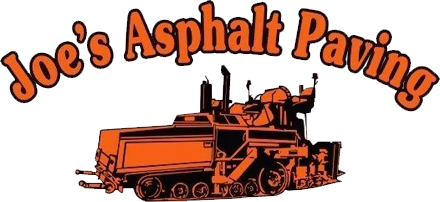FAQs
Joe's Asphalt Paving
Have a residential or commercial asphalt service-related question? We have the answer. Check out these FAQs and call or text us today for more information!
-
What is the difference between driveway resurfacing and sealcoating?
Asphalt resurfacing or rehabilitation involves structural repairs and prolongs the lifespan of asphalt surfaces. This process includes patching (if required) and overlaying the entire surface with a new layer of 1 ½” to 3″ of hot bituminous asphalt. In contrast, sealcoating does not address structural issues; it's akin to repainting a house. Sealcoating primarily protects and extends the life of asphalt without resolving underlying structural flaws. Moreover, sealcoating is a more cost-effective option compared to resurfacing.
-
Can you create asphalt in colors other than black?
Essentially, asphalt appears black when aggregates (stone) are combined with hot asphalt cement. The resulting mixture becomes black. Over time, as the asphalt oxidizes, the coating on the aggregates deteriorates, revealing the color beneath. Depending on the aggregate color used by the asphalt plant, this can result in a "grayish" hue if lighter aggregates are employed.
-
When can I use my new driveway?
The curing process for new asphalt may extend beyond 30 days, influenced by temperature fluctuations between day and night. However, with caution, driving on the surface is typically feasible within 2 to 3 days. For further details regarding tire scuff marks, call or text us now.
-
My car left tire scuff marks on the asphalt. Are they permanent?
Tire scuff marks occur when you turn your car's steering wheel while it's stationary. On hot days, if the asphalt hasn't fully cured, the surface may become blemished, akin to pressing your heel into a soft substance. However, with time, most of these marks tend to become less noticeable.
-
Why do I see roller marks on the surface of my asphalt?
Ensuring a durable asphalt surface hinges on achieving proper compaction. Ideally, compaction levels should reach 90. Occasionally, the rollers may leave temporary "streaks" or marks on the driveway. However, over several months, these marks typically diminish in visibility.
-
My driveway is deteriorating in places, should I wait 1-2 years and get the entire driveway resurfaced or address the issue now?
Similar to repairing a piece of rotting wood on your home's exterior, it's important to address deteriorating asphalt patches promptly. It is more cost-effective than replacing the entire driveway later on. Moreover, spending $1 on repairs during the first half of the driveway's lifespan translates to $4 to $5 in savings compared to repairing it later.
-
When should I sealcoat my new driveway?
The necessity of sealcoating varies based on the level of direct sunlight exposure and the traffic the area receives. As a rule, a surface typically doesn't require sealcoating more frequently than every 3 to 4 years. Excessive sealcoating can result in a smooth and slick surface, particularly noticeable during rainy conditions.
-
What are the pros and cons of using asphalt versus concrete for driveways?
Beyond color, the choice between asphalt and concrete primarily boils down to personal preference. However, there are two key distinctions to consider. Asphalt exhibits flexibility, accommodating usage and minor shifts in the base. Conversely, concrete relies on its inherent strength to bear loads and span weaknesses in the sub-base. Notably, concrete entails significantly higher costs compared to asphalt surfaces of equivalent strength. Request a call back from us to learn more.
-
Can I put an asphalt surface over my old concrete driveway?
Certainly, we can proceed with this approach if the content hasn't degraded excessively. However, there's one consideration to bear in mind. Concrete features expansion joints, and when the concrete shifts, it can cause reflection through the asphalt, leading to cracks. To mitigate this, we can apply paving fabric over the joints to delay cracking, though eventually, it may become visible.
Alternatively, excavating the entire concrete driveway and constructing a new asphalt or concrete driveway from the ground up is an option, albeit a costly one.
serving Area
Middle Tennessee
and surrounding areas
Business Hours
- Mon - Sat
- -
- Sunday
- Closed



Share On: